Artistic Director of The Australian Ballet, David McAllister describes the trajectory of his relationship with dance.
This video was produced with funds donated by Tim Fairfax AC.
- I've gotta say, the first time I saw that portrait, I was just in awe, really. He caught a moment that's sort of not, I guess, what people would think necessarily as a former dancer and artistic director because we tend to be on. And it was sort of more of a pensive moment, and I really liked that 'cause I feel like it's this side of me that sometimes people don't get to see. I guess I've done a lot of portrait photographs in my life. Peter was amazing because he made it so comfortable like I didn't even really notice that he was taking the photos. We were just talking, and it almost felt like it wasn't a photo session except for the fact that I had really good make-up on, and someone had done my hair really nicely, so... And I think what was really nice is 'cause I was involved a little bit in helping them make the shapes, I mean we did lots and lots and lots of moving photographs to make the piece around me. And so I was sort of involved in that 'cause I couldn't help myself but go, "Why don't you try this, "and why don't you throw that leg up?" So that was sort of fun. I was one of those weird kids that just always wanted to dance. And my family, you know, fantastic, very wonderful people. Mum and Dad, Dad was an accountant, Mum was my mum. And I have brothers and sisters that there's no artistic sort of dance background in our family at all. So I was sort of this mutant child who used to dance around the house all the time, and I used to dance in front of the TV when the TV was off, so I could see myself moving around. I didn't really have a plan B. I started training when I was seven. I saw some ballet on TV, which was Rudolf Nureyev doing Don Quixote with the Australian Ballet, and I went, "Oh, that's the sort of dance I wanna do." It's not until you step off the stage that you realise how amazing it is because, you know, the curtain goes up, and even if you feel like you haven't done your best, there is this sense of great appreciation. And it really humbles you that people can react to you in that way. We have such a privilege to do what we do, and then to have the extra acknowledgement, I guess, of an audience to be so generous with their response is quite amazing. So it is something that you never forget, and it's addictive, I've gotta say. Something that your sort of miss when you stop dancing, you know? When I finish my day at the office now and get up from my desk, there's no one applauding anymore. It's like, but I feel lucky that I had that experience. I had a number of career-ending injuries, which luckily I managed to get through. When I was 26, I blew a disc in my back. And after nine months of really slow rehab and therapy and getting myself back into dancing again, I danced for another 11 years. So it was an extraordinary experience. And then the next time I had a big period like that was when I tore my cruciate ligament in my left knee. I think those injuries really taught me a lot about myself and my endurance, and I guess my passion for dancing. But it also set up the career that I now have. So when I was off, I would do things around the ballet company. I'd go to sponsorship functions, and patron functions, and be around the administration. So it sort of began my passion, I guess, for the other side of the organisation, the non-performance side. And now, as artistic director, I think I did my apprenticeship through those injuries. Kids loved to dance. You know, you go to a pre-primary class and you put music on and they all start dancing. And then somehow throughout school-age and teenagers we sort of lose that. You know, we've told to sit down and not move, and anyone that just spontaneously dances, it's sort of seen as being a bit weird. But I think anything that brings dance out of people is really fantastic, and I love that. When you go and see a performance, it's not just what the artists do on stage, it's how you interpret it, so it's interactive. And it can be very seductive, and it's very physical, but it's also very emotional, and, I think, quite visceral that you actually have this opportunity to see people without words telling complex stories.
Related people
Related information
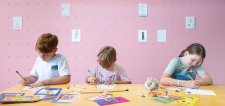
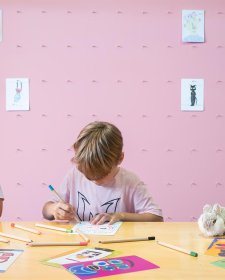
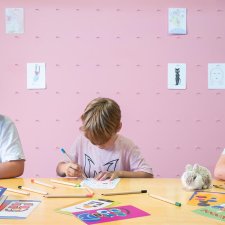
Art cart
Thom Roberts
Drop into the Gallery any time for free creative activities inspired by artist Thom Roberts and his exhibition, The Immersive World of Thom Roberts.
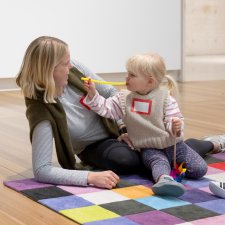
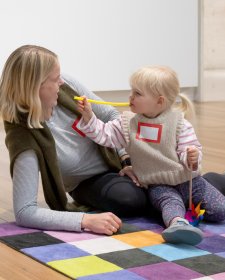
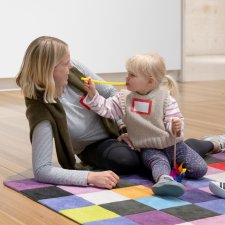
Portrait Play
Face the music
Join us for Portrait Play these school holidays as we explore portraits and music. Come and meet the people that live on our walls, discover musical instruments hidden in the portraits and get creative on your journey through the galleries.
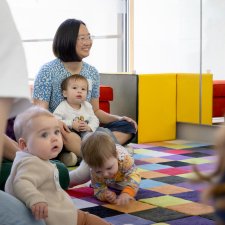
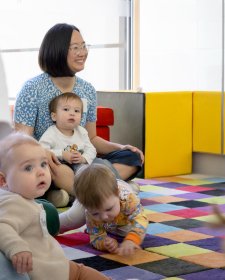
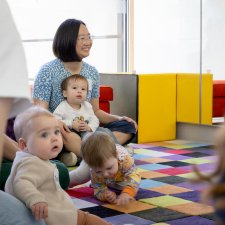
Little Faces
Do we have a treat for the smaller humans in your life! Little Faces is for babies and toddlers (with their grown up) to play, sing and have fun discovering a portrait together.




